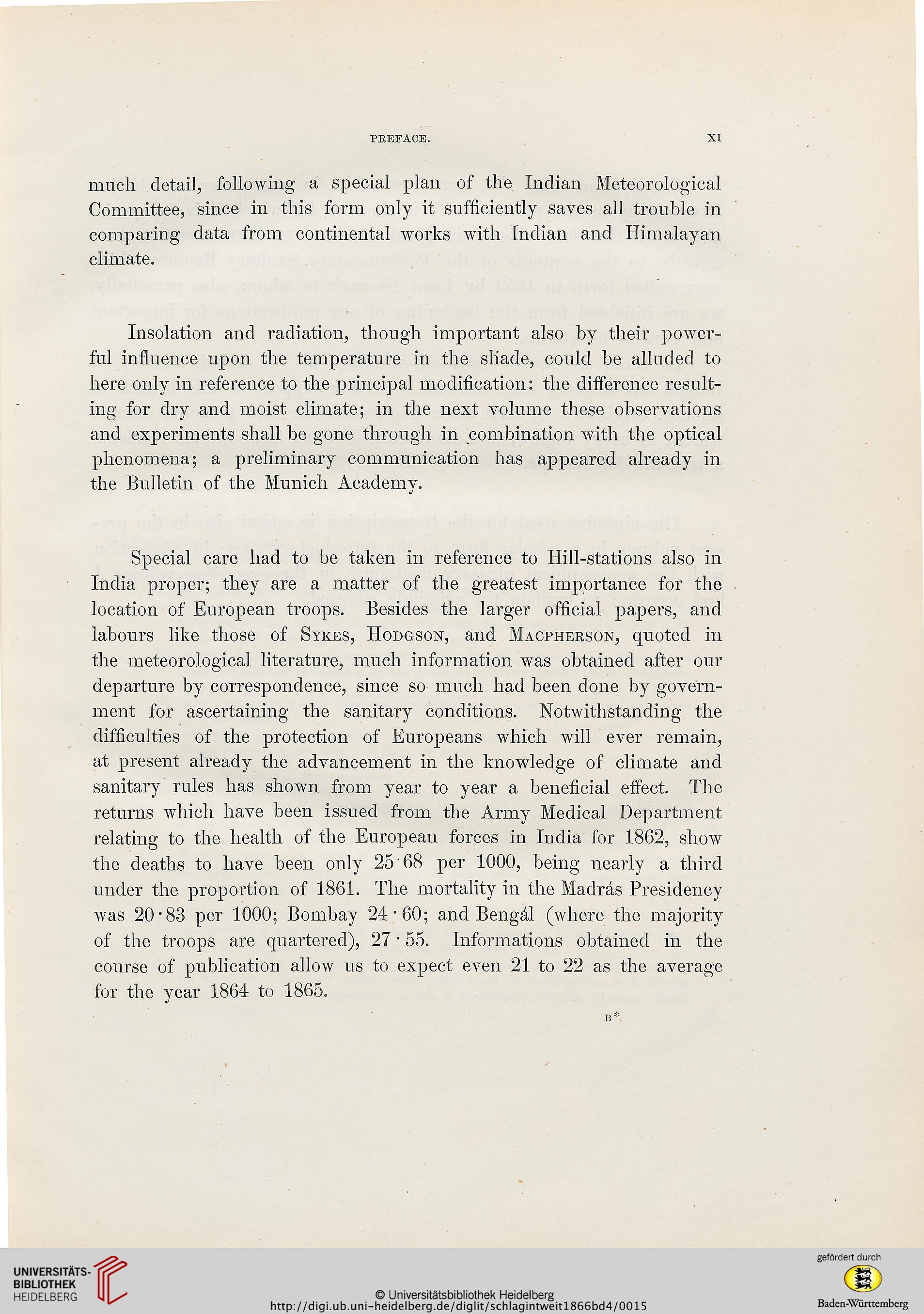PREFACE.
XI
much, detail, following a special plan of the Indian Meteorological
Committee, since in this form only it sufficiently saves all trouble in
comparing data from continental works with Indian and Himalayan
climate.
Insolation and radiation, though important also by their power-
ful influence upon the temperature in the shade, could be alluded to
here only in reference to the principal modification: the difference result-
ing for dry and moist climate; in the next volume these observations
and experiments shall be gone through in combination with the optical
phenomena; a preliminary communication has appeared already in
the Bulletin of the Munich Academy.
Special care had to be taken in reference to Hill-stations also in
India proper; they are a matter of the greatest importance for the
location of European troops. Besides the larger official papers, and
labours like those of Sykes, Hodgson, and Macpherson, quoted in
the meteorological literature, much information was obtained after our
departure by correspondence, since so much had been done by govern-
ment for ascertaining the sanitary conditions. Notwithstanding the
difficulties of the protection of Europeans which will ever remain,
at present already the advancement in the knowledge of climate and
sanitary rules has shown from year to year a beneficial effect. The
returns which have been issued from the Army Medical Department
relating to the health of the European forces in India for 1862, show
the deaths to have been only 25'68 per 1000, being nearly a third
under the proportion of 1861. The mortality in the Madras Presidency
was 20*83 per 1000; Bombay 24*60; and Bengal (where the majority
of the troops are quartered), 27 ■ 55. Informations obtained in the
course of publication allow us to expect even 21 to 22 as the average
for the year 1864 to 1865.
it*
XI
much, detail, following a special plan of the Indian Meteorological
Committee, since in this form only it sufficiently saves all trouble in
comparing data from continental works with Indian and Himalayan
climate.
Insolation and radiation, though important also by their power-
ful influence upon the temperature in the shade, could be alluded to
here only in reference to the principal modification: the difference result-
ing for dry and moist climate; in the next volume these observations
and experiments shall be gone through in combination with the optical
phenomena; a preliminary communication has appeared already in
the Bulletin of the Munich Academy.
Special care had to be taken in reference to Hill-stations also in
India proper; they are a matter of the greatest importance for the
location of European troops. Besides the larger official papers, and
labours like those of Sykes, Hodgson, and Macpherson, quoted in
the meteorological literature, much information was obtained after our
departure by correspondence, since so much had been done by govern-
ment for ascertaining the sanitary conditions. Notwithstanding the
difficulties of the protection of Europeans which will ever remain,
at present already the advancement in the knowledge of climate and
sanitary rules has shown from year to year a beneficial effect. The
returns which have been issued from the Army Medical Department
relating to the health of the European forces in India for 1862, show
the deaths to have been only 25'68 per 1000, being nearly a third
under the proportion of 1861. The mortality in the Madras Presidency
was 20*83 per 1000; Bombay 24*60; and Bengal (where the majority
of the troops are quartered), 27 ■ 55. Informations obtained in the
course of publication allow us to expect even 21 to 22 as the average
for the year 1864 to 1865.
it*




